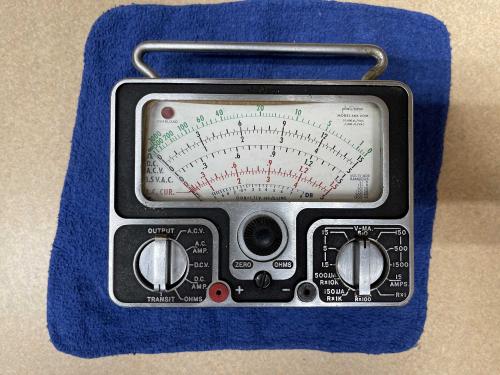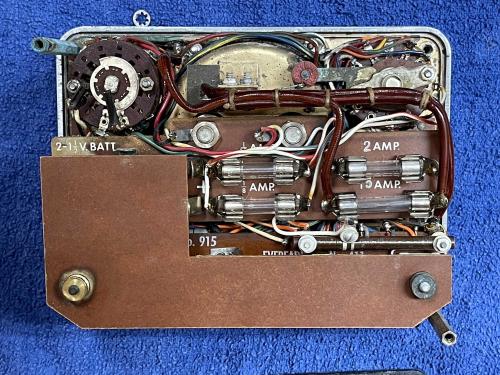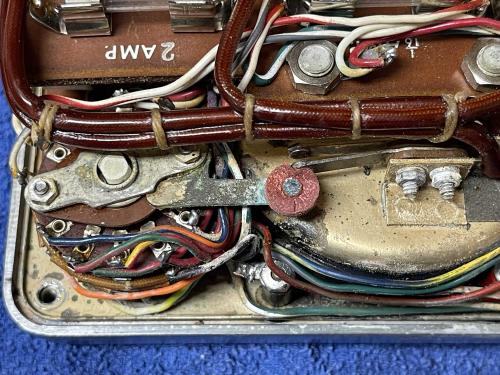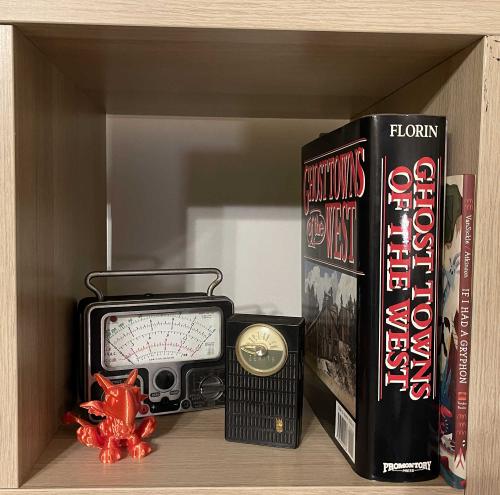- 2024
- Sep
- 9
The Phaostron 666 Multimeter from 1958.
I recently went to visit a former co-worker who had retired, and was moving. He said “I’ve got decades of junk from my ventures, if you want some come get it.”
Well, come get it I did. In addition to boxes of 1980s ICs, a bunch of random parts, and some test equipment was this unusual example of a meter.
Phaostron, still in business, tended to make ruggedized meters for industry - and this thing is no exception. It probably would have had a case it slid into (long since dust) as evidenced by the slides on the side.
The person said that it was kind of messy inside, and this note was attached. It looks as if he had tried to sell it at some point in the past, probably at a yard sale.
And corroded inside it is. You can see it on the internals even before the case is removed.
It’s hard to see from the lighting, but the case is all brass - even the front, which is a solid chunk of die-cast brass. It was sold as being antimagnetic, which asks the question: what was this thing designed for?
The thing is simply packed with parts. All of the ranges are fused with their own specific size fuse.
But, as noted - it’s a mess inside. Corrosion everywhere. It takes a 15V battery, and a 4.5V mercury cell. None of those are available, but it looks like they leaked at some point in the past. Mercury cells leaking gave the same messy green crud as alkaline cells would, and this one certainly shows it. Also note the wax-paper capacitor tucked down in there. How you’d get to that is a question for someone else.
The other side reveals just as much packed-in parts.
One interesting thing of note - instead of trying to switch the 15A range on the front, the manufacturer used this fiber insulated disc to push a set of contacts together. While the fiber washer is long since passed it’s prime, it’s still an interesting example of how to properly isolate higher currents from the user’s fingers. Note all of the tightly tied cables - this thing was quality crafted.
So, what happens to this device? It’s supposed to have an illuminated scale, powered by the AC line. The power cord is missing, long since removed (or never attached?) but I can see the lamp in there. Perhaps I’ll disconnect and tie off the original wiring and just put some LEDs in there.
I think it would probably look good with low illumination, because at this point it’s probably not going to do anything other than be a display piece, a device that looks and feels like it’s come from the distant retro future. It sits quite happily on the display shelf, behind a small pocket radio of similar vintage.








